15+ Sample Truck Inspection Checklist
-
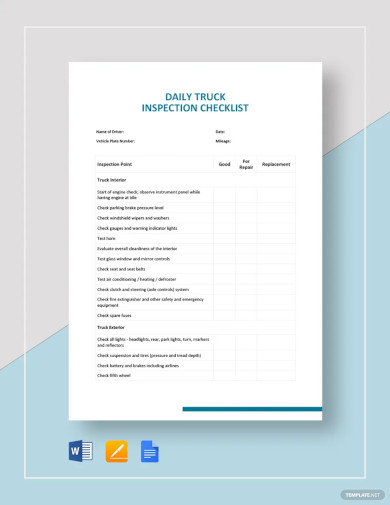
Truck Inspection Checklist Template
download now -
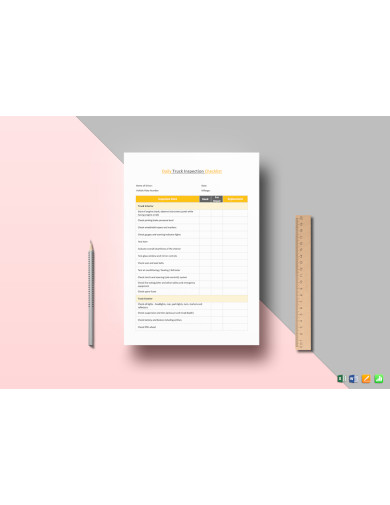
Sample Truck Inspection Checklist Template
download now -
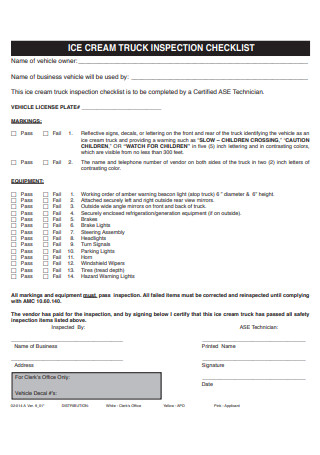
Ice Cream Truck Inspection Checklist
download now -

Tanker Truck Inspection Compliance Checklist
download now -
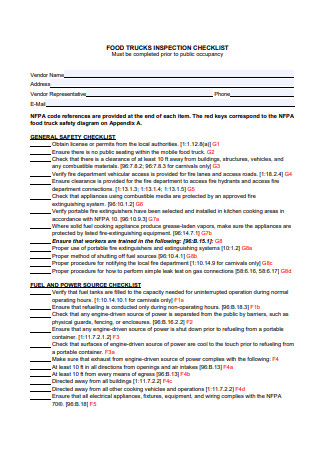
Food Truck Inspection Checklist
download now -
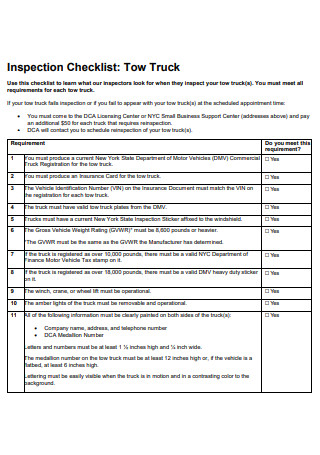
Basic Truck Inspection Checklist
download now -
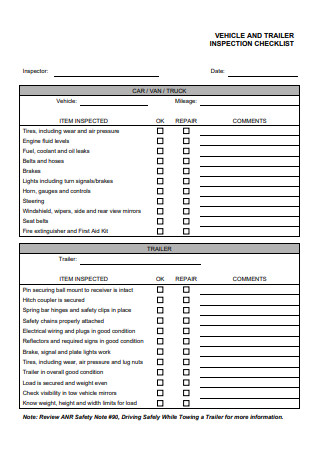
Truck Inspection Checklist Example
download now -
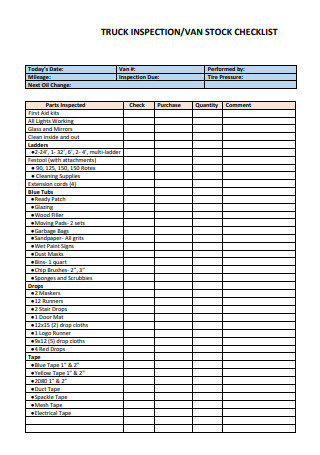
Truck Inspection Van Stock Checklist
download now -

Company Truck Inspection Checklist
download now -
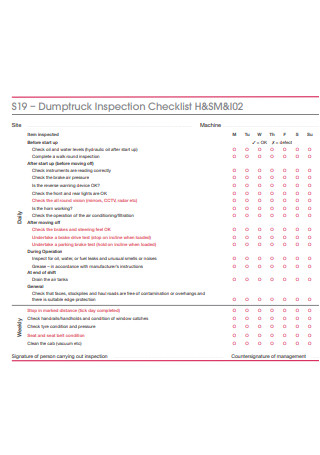
Truck Inspection Checklist in PDF
download now -
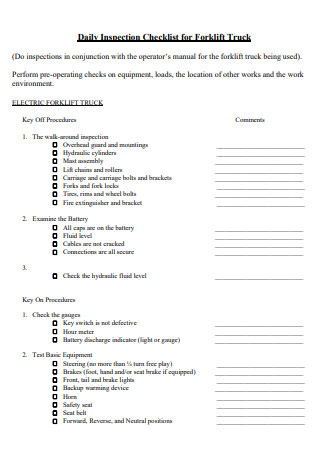
Truck Daily Inspection Checklist
download now -

Powered Industrial Truck Inspection Checklist
download now -

Printable Truck Inspection Checklist
download now -
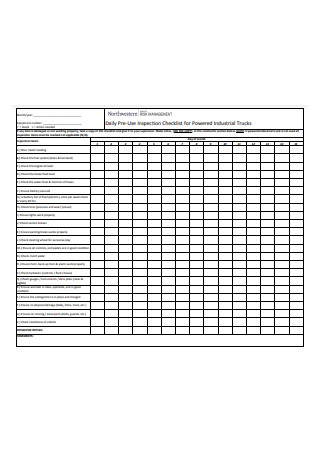
Industrial Truck Daily Inspection Checklist
download now -
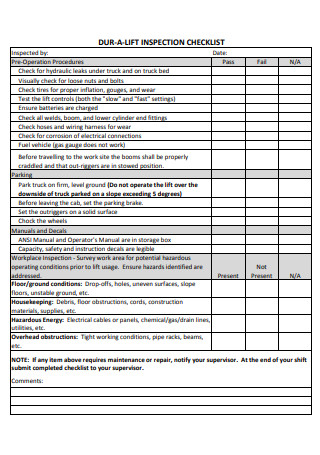
Standard Truck Inspection Checklist
download now -
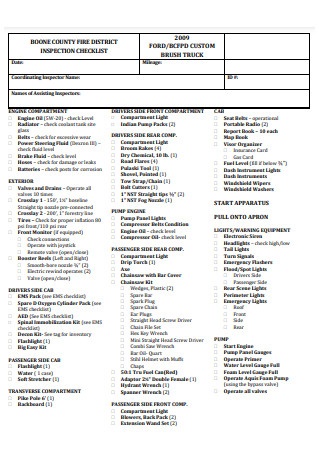
Custom Truck Inspection Checklist
download now
FREE Truck Inspection Checklist s to Download
15+ Sample Truck Inspection Checklist
What is a Truck Inspection Checklist?
Why Should You Get Your Truck Inspected?
What Are Some Examples of Trucks?
What is the DOT Truck Inspection Checklist?
Step by Step Process in Creating a Truck Inspection Checklist
FAQs
How often should you inspect or get your truck inspected?
Do I really need to inspect the truck prior to operation?
Do I need a license to perform truck inspections?
What is a Truck Inspection Checklist?
A truck inspection checklist is a vital document to have when you get your truck inspected before your journey, or when you do the inspection yourself. This is used by commercial drivers to make sure that their truck is suitable for road use and is compliant with all safety regulations. It makes the inspection task much more streamlined and it makes sure that you don’t miss a component or part that may turn out to be defective, and in turn saves you and the truck from trouble, whether being a deadweight stuck on the side of the highway, or getting pulled over and receiving a ticket from the law enforcement for being non-compliant with safety standards.
Why Should You Get Your Truck Inspected?
Safety is one of the most important reasons why you should get it done. Just because you’ve never had any trouble driving your truck on the highway, does not mean that you should not get your truck inspected. By also having your truck inspected, you save more than just money, you also have the potential to save your life and that of the other drivers around you, and from the scathing remarks that you could receive from your boss should your shipment get delayed due to your truck having a breakdown.
What Are Some Examples of Trucks?
The trucks that drive on the highway come in different shapes and sizes. Here are some common examples of trucks you may encounter on the road.
What is the DOT Truck Inspection Checklist?
This is a standardized safety checklist used by the Department of Transportation for inspecting trucks. This is divided into six levels.
- Level 1 – North American Standard Inspection: This level focuses on the comprehensive inspection of the driver and the vehicle. The DOT inspector checks the documents of the driver, as well as his sobriety, and if he is free of any illegal substance use. These are some of the areas of the truck being inspected (but not limited to) by the DOT personnel:
- Brakes
Seatbelts
Brake lamps
Coupling Devices
Tires
Emergency Exits
Turn Signals
Safe loading
Cargo securement
Trailer bodies
Frame
Headlamps
Tail lamps
Lamps on projecting loads
Suspension - Level 2 – Walk-around driver and vehicle inspection: In this level, the assigned DOT personnel perform the inspection by walking around the vehicle. This kind of inspection just serves as a general overview and won’t cover the parts that are underneath the vehicle.
- Level 3 – Driver-only inspection: This level focuses on an in-depth inspection of the driver. The DOT inspector checks the driver for the following:
- Driver’s License
Medical card
Driver’s daily log
Seatbelt
Driver and Vehicle Inspection Report
Driver Incident History
Skill performance evaluation certificate - Level 4 – Special inspection: This level of DOT inspection can also be referred to as a one-time inspection that a DOT inspector does to have a closer look at certain or any special features of the truck if there are any that exist. This level of inspection is usually done to rule out any previously registered claims about the truck or to support any ongoing case study or trends about the vehicles.
- Level 5 – Vehicle-only inspection: In this level, the DOT inspector will focus on all the areas that are covered in the level one inspection. The key difference is this is done without the presence of the driver and this type of inspection can be done everywhere. This level is also most usually done whenever an accident has taken place, or when an incident has taken place and the driver has left the scene.
- Level 6 – Enhanced North American Standard Inspection for Radioactive Shipments: In this level, the inspection focuses on trucks that are transporting highway route-controlled quantities of radioactive material. This level of inspection covers the following:
- Inspection for Radiological Shipments
Enhancements to the Level 1 DOT inspection
Inspection procedures
Radiological requirements
Enhanced out of service criteria
Step by Step Process in Creating a Truck Inspection Checklist
Here are the steps you can follow should you decide to make your own truck inspection checklist:
1. Know the type of truck that will be inspected.
Before even creating the checklist, it is important that you know about the type of truck to be inspected, whether if it is a flatbed truck, a semi-trailer truck, a dump truck, a food truck, or a firetruck. This is done because different trucks have components and parts that are unique to them (a firetruck has a siren equipped while a dump truck does not). The research plan is also done to avoid any unnecessary confusion when conducting the check itself.
2. Planning for the checklist.
When you are satisfied with the research and the familiarization process you’ve done on the truck, you should begin planning the checklist. Planning on making a detailed format is usually recommended for trucks, as it can involve travelling long distances or handling sensitive cargo. If possible, you can also plan to have a road test checklist included to be more thorough with your test.
3. Creation of the checklist.
Once the familiarization and research of the type of truck are done, it is time to create the checklist. It can be written by hand or digitally encoded, depending on your preference. Here, the items necessary in the checklist are included, such as the vehicle and owner’s information, the parts and components to be inspected and tested, as well as anything that is unique to that specific type of truck. You can also have a detailed sketch of the truck drawn on the checklist if you prefer. You should also leave space for feedback and a safety observation report, in case you would still like to make the checklist yourself but prefer an authorized person to perform the inspection. Depending on your preference, you can also turn it into a questionnaire checklist.
4. Verify the checklist.
When the creation of the checklist is done, make sure to verify it with the information that is researched, to make sure that it is correct and nothing of importance is overlooked. You should also check if there are parts that do not belong to the truck that you may have accidentally included. If you hand it over to an authorized inspector, it is also important to let him/her know about the parts and components that you have included in the inspection checklist, so he/she can also verify your created checklist and also to avoid any confusion.
When everything else is done, prepare the truck’s necessary papers as well as your own, so the inspection process can begin.
FAQs
How often should you inspect or get your truck inspected?
The inspection process should be done before operating the truck. A simple visual walkaround inspection performed on the truck can help the driver assess for hazards around the truck’s vicinity, such as other people, stray pets, potholes, foreign objects, and other vehicles. These can prove to be a concern whenever the driver starts using the truck for operations.
Do I really need to inspect the truck prior to operation?
Yes, it is recommended that you do so. You should take time to perform an inspection before venturing out the road/highway, as any defects or irregularities found on your truck during inspection can save you time, money, and headaches in the long run. If you operate the vehicle uninspected, there is a chance that something as simple as a broken blinker or brake light can turn your truck into a rolling hazard and is guaranteed to land you in trouble with the authorities.
Do I need a license to perform truck inspections?
There are no requirements that you should be licensed to do truck inspections, but proper certification is needed. A specific training program concerning truck inspections is to be completed, and you should have prior experience as a truck mechanic or a federal or state inspector. If a truck is due to undergo its annual DOT inspection, then a DOT inspector will perform it. Sometimes, you will also deal with state troopers, the CVSA (Commercial Vehicle Safety Alliance), and a member of the FMCSA (Federal Motor Carrier Safety Association), which is the safety organization that oversees and funds all inspections in the United States.
It is absolutely necessary to make sure that your truck has no problems prior to operation. As you notice a minor discrepancy, you should get it fixed as soon as you can to avoid that small problem snowballing into a much bigger one. It is also recommended to get it inspected and maintained during intervals to keep it in top shape. Having a checklist for this process will definitely help make sure that everything is fine. If you are in need of an example checklist, there are templates listed above this article that you can use as a guide.
